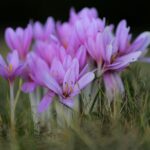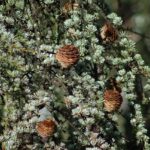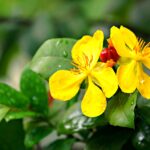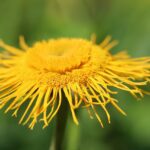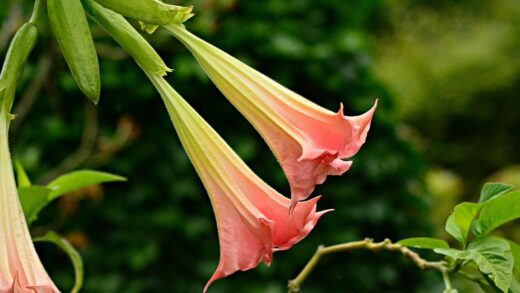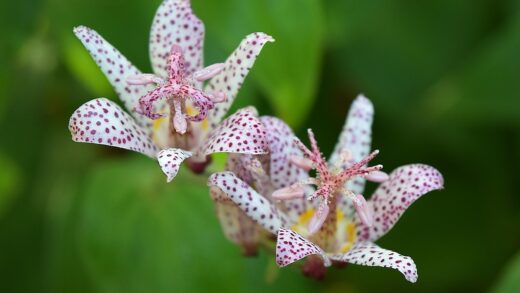The trifoliate orange is a notably self-sufficient plant, capable of thriving in a wide range of soil conditions without demanding an intensive fertilization regimen. Its adaptability allows it to grow well in average garden soils, extracting the necessary nutrients to support its unique growth cycle. This resilience makes it an excellent choice for low-maintenance landscapes. However, while it can survive with minimal intervention, providing a balanced supply of essential nutrients can significantly enhance its performance, resulting in more vigorous growth, richer green foliage, a greater abundance of fragrant spring blossoms, and a more impressive display of its distinctive yellow, aromatic fruits in the autumn.
Understanding the specific nutrient needs of this plant allows for a more targeted and effective fertilization strategy. Like all plants, it requires a balance of macronutrients—nitrogen (N), phosphorus (P), and potassium (K)—as well as a suite of micronutrients. Nitrogen is crucial for lush foliar growth, phosphorus plays a vital role in root development and flowering, and potassium is essential for overall plant health, disease resistance, and fruit quality. A deficiency in any of these key elements can manifest in visible symptoms, such as poor growth or discolored leaves, signaling the need for nutritional support.
The timing and method of fertilizer application are just as important as the type of fertilizer used. The most beneficial time to feed a trifoliate orange is in the early spring, just as the plant is breaking dormancy and beginning its annual cycle of growth. Applying fertilizer at this stage provides the plant with the energy reserves it needs to produce new leaves, branches, and flowers. A second, lighter application can be made in early summer to support fruit development, but late-season fertilization should be strictly avoided as it can promote tender new growth that is vulnerable to winter damage.
Ultimately, a responsible approach to fertilization begins with an assessment of the soil. Rather than applying fertilizers on a speculative basis, observing the plant’s health and, if possible, conducting a soil test can provide precise information about any specific deficiencies. This allows for a tailored feeding program that provides only what the plant needs, which is both more effective for the plant and more environmentally sound. A well-nourished trifoliate orange is better equipped to resist pests and diseases and will more fully express its unique ornamental qualities throughout the year.
Understanding essential nutrients
The health and vitality of the trifoliate orange depend on a consistent supply of several essential nutrients, which are broadly categorized into macronutrients and micronutrients. The primary macronutrients are nitrogen (N), phosphorus (P), and potassium (K), which are needed in the largest quantities. Nitrogen is the engine of vegetative growth, responsible for the development of lush, green leaves and strong stems. A plant deficient in nitrogen will often exhibit pale green or yellowish leaves (a condition known as chlorosis), particularly on older growth, and will generally appear stunted and lacking in vigor.
More articles on this topic
Phosphorus is fundamentally important for energy transfer within the plant, playing a critical role in root formation, flower development, and fruit production. An adequate supply of phosphorus is especially vital for young plants establishing their root systems and for mature plants to ensure a bountiful display of blossoms in the spring. Symptoms of phosphorus deficiency can be subtle but may include a purplish tinge to the leaves and overall reduced growth. As it is less mobile in the soil, it is important to ensure phosphorus is available in the root zone during planting.
Potassium contributes to the overall hardiness and resilience of the plant. It is essential for regulating water movement, activating enzymes, and strengthening cell walls. A sufficient level of potassium enhances the trifoliate orange’s ability to withstand stresses such as drought, cold, and disease. It also plays a role in the size and quality of the fruit. Potassium deficiency can sometimes manifest as yellowing or browning along the margins of older leaves, but like other deficiencies, a soil test is the most reliable diagnostic tool.
In addition to the primary macronutrients, the trifoliate orange also requires a range of micronutrients, albeit in much smaller quantities. These include elements such as iron, magnesium, manganese, and zinc. While needed in trace amounts, a lack of any of these can cause significant health problems. Iron deficiency, for example, is a common issue in alkaline soils and results in interveinal chlorosis, where the leaves turn yellow, but the veins remain green. Using a balanced fertilizer that includes a spectrum of micronutrients can help prevent these issues and ensure the plant has everything it needs for optimal health.
Choosing the right fertilizer
Selecting an appropriate fertilizer for the trifoliate orange is a key step in providing for its nutritional needs. For general purposes, a balanced, all-purpose fertilizer is an excellent choice. These products contain equal or similar proportions of the three main macronutrients, as indicated by their N-P-K ratio (e.g., 10-10-10 or 12-12-12). This balanced formulation ensures that the plant receives a steady supply of all the primary nutrients required for healthy growth, flowering, and fruiting. Both granular, slow-release forms and water-soluble liquid forms can be effective.
More articles on this topic
For gardeners seeking a more specialized option, fertilizers formulated specifically for citrus trees or acid-loving plants can also be highly beneficial. Citrus-specific fertilizers are designed with the particular needs of these plants in mind, often containing an enhanced blend of micronutrients like iron, zinc, and manganese, which are crucial for preventing common deficiencies such as chlorosis. As trifoliate orange prefers a slightly acidic soil pH, fertilizers for acid-loving plants (like those for azaleas or rhododendrons) can also be suitable, as they help to maintain the desired soil acidity, which improves nutrient uptake.
Organic fertilizers offer a natural and sustainable alternative to synthetic chemical products. Materials such as well-rotted compost, aged animal manures, bone meal, and blood meal can provide a slow, gentle release of nutrients while also improving the soil structure. Compost is particularly valuable as it supplies a broad spectrum of both macro and micronutrients and enhances the soil’s ability to retain moisture and support beneficial microbial life. Incorporating a generous layer of compost into the soil at planting time and top-dressing around the plant each spring is a superb way to provide long-term, balanced nutrition.
The choice between granular and liquid fertilizers often comes down to the specific situation and gardener preference. Slow-release granular fertilizers are convenient, requiring only one or two applications per year, and provide a steady supply of nutrients over several months. This method minimizes the risk of over-fertilizing and nutrient runoff. Liquid fertilizers, on the other hand, are fast-acting and are absorbed quickly by the plant. They are particularly useful for container-grown plants or for providing a quick nutritional boost to a plant showing signs of deficiency.
Application techniques and timing
The timing of fertilizer application is crucial to ensure that nutrients are available when the trifoliate orange needs them most. The primary feeding should occur in early spring, just as the buds begin to swell and new growth is imminent. This application provides the essential resources for the initial flush of growth, foliage development, and the formation of flower buds. Applying fertilizer at this time replenishes the nutrients used by the plant during the previous season and supports its energy requirements for the demanding period of spring growth.
For granular fertilizers, the application method is straightforward but requires care. The recommended amount of product, as specified on the packaging, should be scattered evenly on the soil surface around the plant. The application area should extend from a few inches away from the base of the trunk out to the dripline (the outer edge of the branch canopy), as this is where the majority of the feeder roots are located. After spreading the granules, it is beneficial to lightly rake them into the top layer of soil and then water the area thoroughly. Watering is essential to activate the fertilizer and transport the nutrients down into the root zone.
A second, optional fertilizer application can be considered in early to mid-summer, particularly for young plants that are still establishing or for plants that showed signs of deficiency earlier in the year. This summer feeding can help support the development of the fruit and bolster the plant’s resources for the remainder of the growing season. If a second application is made, it should be at a reduced rate, typically about half of the spring application. It is critically important to avoid fertilizing after late July or early August in most temperate climates.
Late-season fertilization is strongly discouraged because it can stimulate a new flush of vegetative growth. This new, tender growth will not have adequate time to harden off and mature before the first frosts of autumn. As a result, it is highly susceptible to being damaged or killed by the cold, which can weaken the overall plant and create entry points for diseases. Halting fertilization in late summer allows the plant to naturally begin its transition towards dormancy, which is a vital process for ensuring its survival through the winter.
Recognizing and correcting deficiencies
Observing the leaves of a trifoliate orange is one of the most effective ways to spot potential nutrient deficiencies. The most common symptom is chlorosis, which is a general term for the yellowing of leaf tissue. If the entire leaf, including the veins, turns a pale green or yellow, it often points to a nitrogen deficiency, especially if the yellowing is more pronounced on older, lower leaves. Nitrogen is mobile within the plant, so it will move this nutrient from older leaves to support new growth when supplies are low. A balanced fertilizer containing nitrogen will usually correct this issue.
A different pattern of chlorosis, known as interveinal chlorosis, is also a key diagnostic sign. This is when the leaf tissue between the veins turns yellow, but the veins themselves remain green, creating a distinct netted or patterned appearance. This symptom most commonly indicates a deficiency in micronutrients, particularly iron, but can also be caused by a lack of magnesium or manganese. Iron chlorosis is often triggered not by a lack of iron in the soil, but by a high soil pH (alkaline soil), which makes the iron chemically unavailable for the plant to absorb.
Correcting micronutrient deficiencies often requires a two-pronged approach. In the short term, a foliar spray containing chelated iron or a blend of micronutrients can be applied directly to the leaves for rapid absorption and a quick green-up. For a long-term solution, especially if the issue is high soil pH, the soil itself must be addressed. Applying soil acidifiers like elemental sulfur or iron sulfate, according to soil test recommendations, can gradually lower the pH and make existing nutrients more available. Incorporating acidic organic matter like pine bark or peat moss can also help over time.
While it is important to recognize signs of deficiency, it is equally important not to jump to conclusions and over-fertilize. Symptoms like yellowing leaves can also be caused by other issues, such as poor drainage, overwatering, or root damage. Before applying corrective fertilizers, it is crucial to assess the overall growing conditions. Ensure the soil is well-drained and the watering practices are appropriate. If the conditions seem correct, then addressing the potential nutrient issue with a cautious application of a suitable fertilizer is the next logical step.







